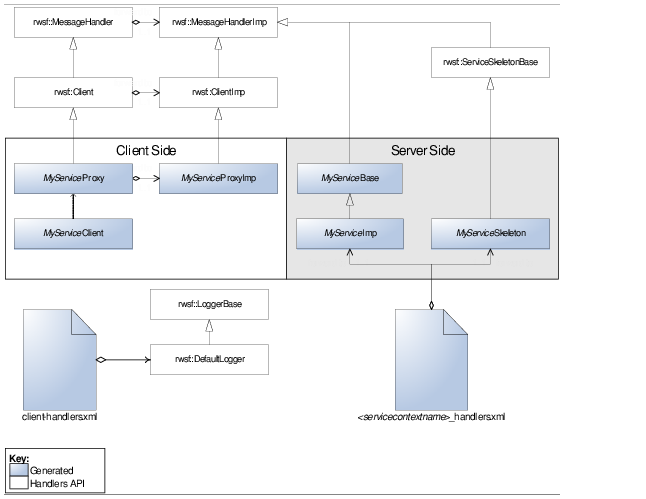HydraExpress provides an API for creating your own handlers. The classes in this API are implemented in the Web Services Library and are described in the
HydraExpress C++ API Reference Guide.
Table 9 describes the classes that are the most important for creating custom message handlers.
Figure 9 shows the relationship between message handlers and the generated classes. Note that all of Web service-related classes generated by HydraExpress are essentially message handlers. The handler that appear by default in
<servicecontextname>_handlers.xml,
MyServiceSkeleton, derives (through intermediaries) from
rwsf::MessageHandlerImp, as will your custom message handlers.
The file
<servicecontextname>_handlers.xml is generated and initially contains a service-endpoint that points to the service implementation.
“Chaining Handlers” discusses using this file to configure and chain handlers. The file
client-handlers.xml is also generated. In the request-response and one-way message patterns, only the logger handler is initially present. For the notification and solicit-response message patterns, the
client-handlers.xml file is used to configure the handlers for incoming requests and outgoing responses instead of the
<servicecontextname>_handlers.xml file. For information on the notification pattern, see
Chapter 9 . For information on the solicit-response pattern, see
“The Solicit-Response Pattern.”To create your own handler, just derive directly from
rwsf::MessageHandlerImp and add information identifying your handler classes to
<servicecontextname>_handlers.xml. For more information, see
“Creating Your Own Handlers.”

